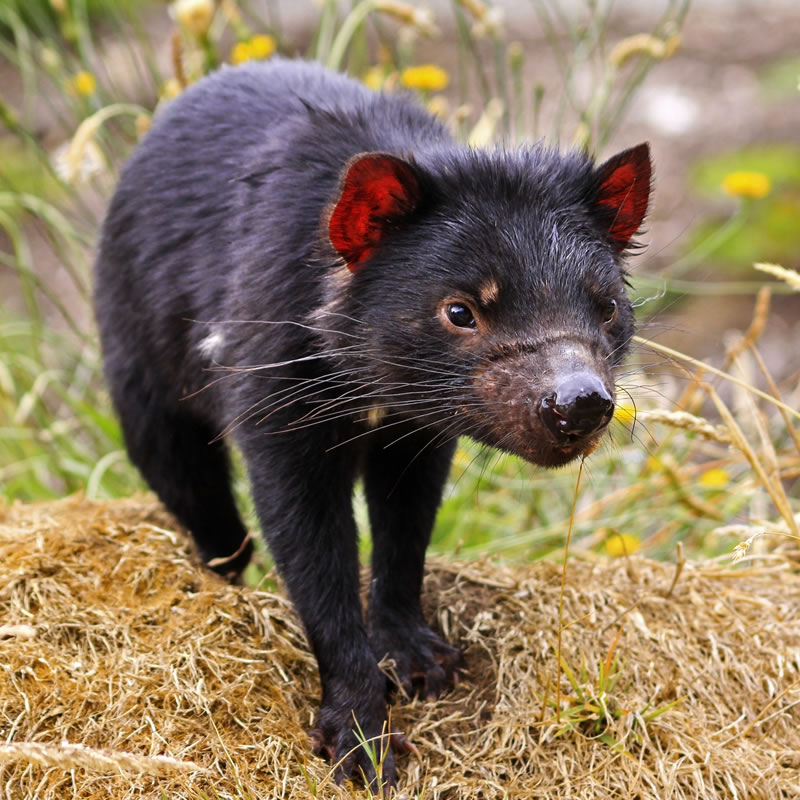
Scientific Name
Sarcophilus harrisii
Classification
| Kingdom | Animalia |
| Phylum | Chordata |
| Class | Mammalia |
| Order | Dasyuromorphia |
| Family | Dasyuridae |
| Genus | Sarcophilus |
| Species | harrisii |
IUCN Redlist Status

Location
Tasmanian devils are only found in the wild on the Australian island of Tasmania.
Habitat
It inhabits many or all habitats of the island including rainforests, woodland forests and coastal brush areas.
Diet
Tasmanian devils are mainly scavengers, and will feed on the carcasses of other animals. The devils have strong teeth that allow them to eat most or all of the carcass, including the bones.
Size
They grow to a length between 22 and 32 inches, and weigh up to 26 pounds.
Description
Their tail is roughly half the size of the body, and is used to store a large portion of Tasmanian devils' body fat. Their fur is black and they often have white patches on their chests and rumps. Their face resembles that of a large rat (although they are unrelated), and their muzzles are a brownish-tan. Tasmanian devils' are relatively short with shoulder height of about 1 foot and has short legs.
Reproduction
Females' gestation period last between 3 and 4 weeks. Their litter size will vary, but the mother only has enough mammary glands and nipples to nurse four young.
Adaptations
The most noticeable adaptation of Tasmanian devils is its excellent senses. It will use its great sense of smell to locate carrion during the day, but especially at night. Tasmanian devils can also emit a pungent odor as a defense mechanism when threatened.
Special Facts
Earlier in the 20th century, the population of Tasmanian devils nearly reached extinction due to hunting and trapping, but recovered once Australian law protected the species. In the last decade, the population of Tasmanian devils has once again been threatened by a devastating facial tumor disease. A program called the Save the Tasmanian Devil has been started to help the animal and manage the disease.
